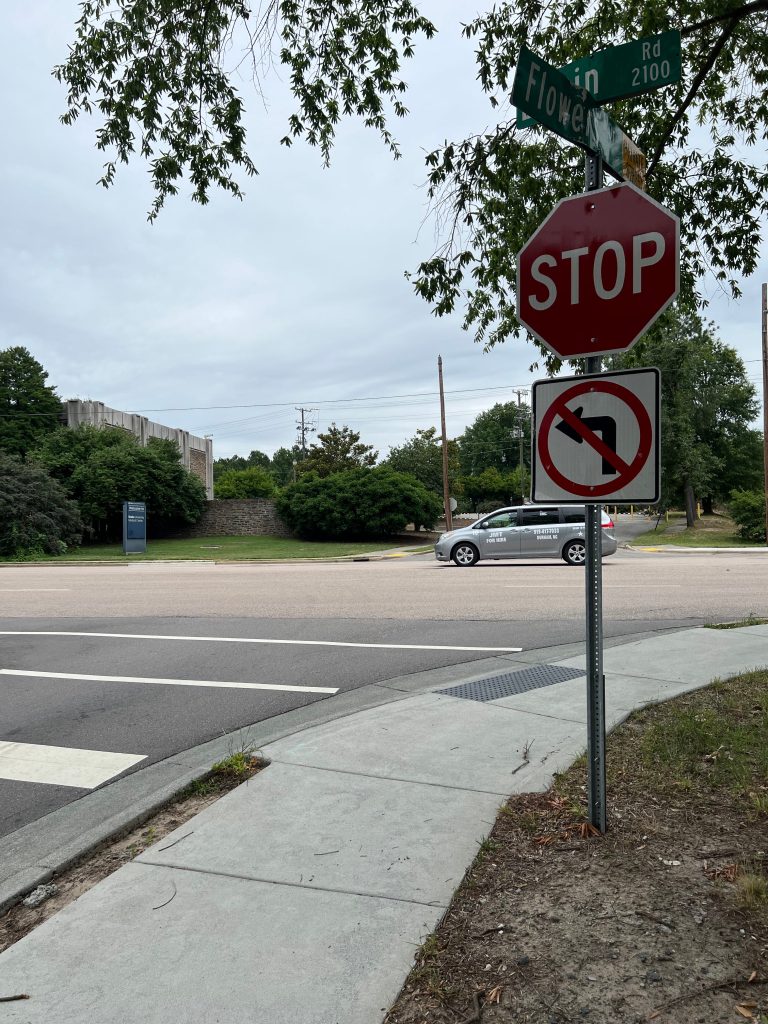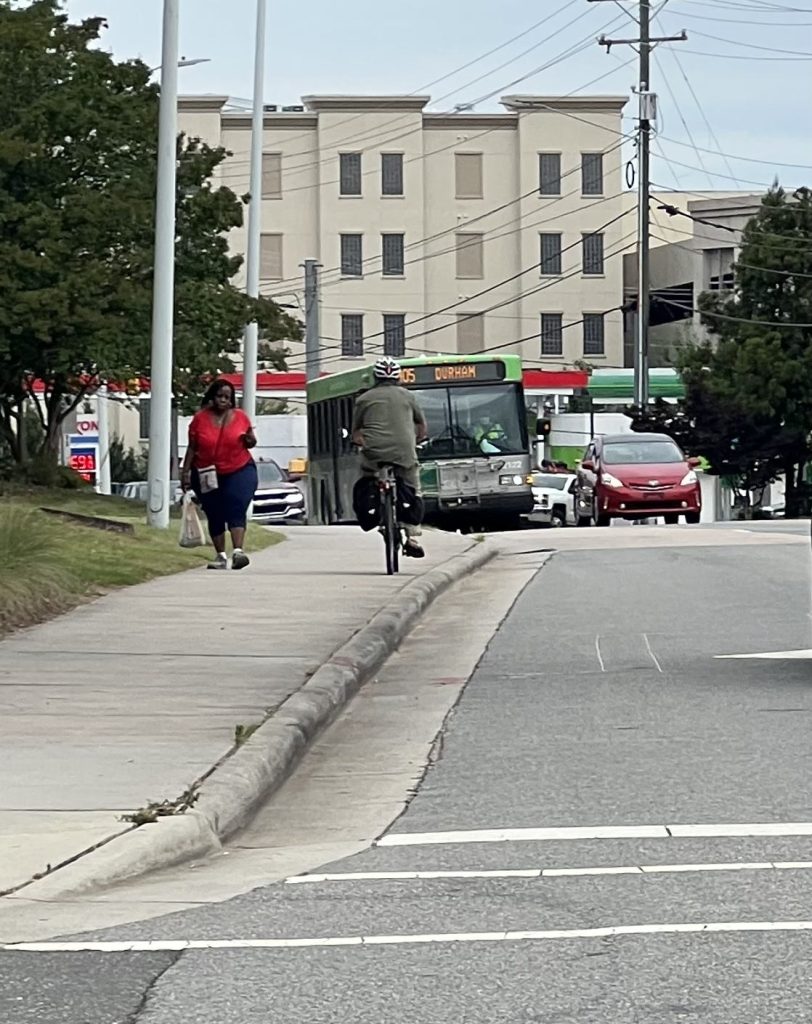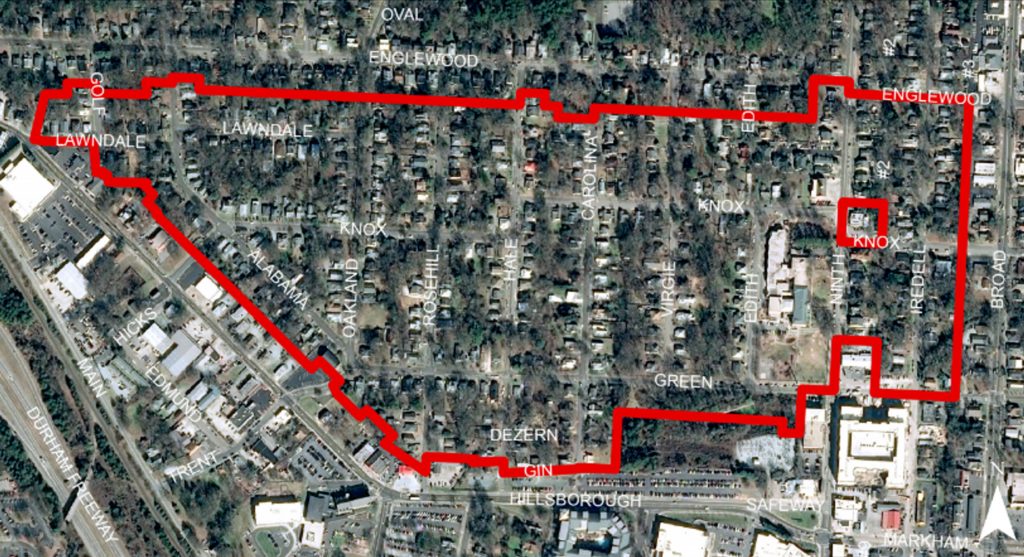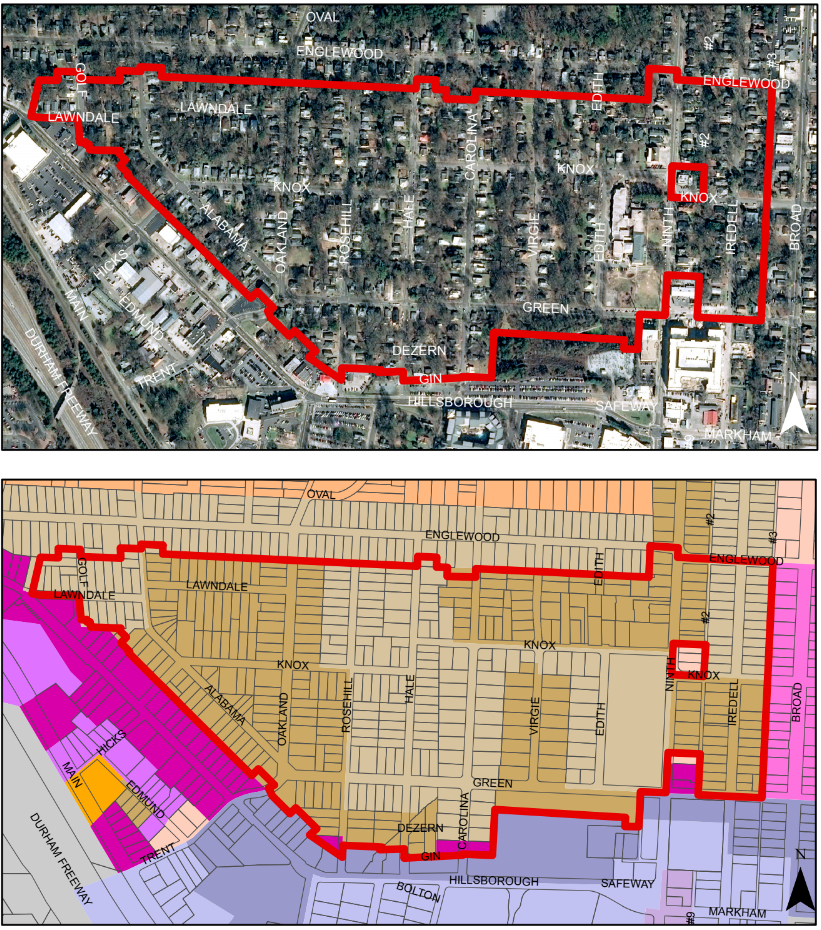Despite its deadly flaws and hostile car-centric design
TLDR: we must improve pedestrian access in front of the medical centers and add/improve bike lanes along the rest of Erwin Road corridor.
Water takes the shortest path as it flows downhill.

People also often take a path that is shorter, safer, or more convenient, and a desire line is left behind. We can see the desires of people by the lines they leave and signs put up in response. These artifacts are clues to unmet needs and design flaws.
A desire line may be a corner cut to shorten a walk twice a day.
Here a warning sign was posted to place the burden on the individual, a lazy absolution of a responsibly to fix a broken design by adding a safe crossing where one is desired.
Desire lines can be left by overlooked, vulnerable users. Many rely on transit to reach essential jobs at the hospitals, university, and surrounding businesses but are met without a dignified gateway to campus or their workplace.
Compare entry gateways for drivers and transit users. Whose needs are being met?
Nearly every bus stop has a desire line leading from it, but few have shelters, seats, or lights. Some are better than most, with trash cans.
Other vulnerable users include those in wheelchairs.
Curb cuts and ramp access seem to be improving, but accessibility to businesses and parking garages remains spotty.
Surely some folks in wheelchairs navigate Erwin Road for appointments at Duke Medical Center or the VA. Don’t just tell them to go another way; fix the problem and add ADA ramps and paths.
A desire line may be use of an unsanctioned path. On Erwin Road, bikes are often seen on the sidewalk (not legal for adults in Durham), a path taken for safety and to save time. If people will walk and bike in conditions like these, how many more would join them if protected bike lanes or an off-street multi-use paths were added?
A desire line may be a left turn where one is prohibited, a common occurrence seen at this location.

Drivers, bikers, and walkers all occasionally ignore a traffic law or sign, but one modality is far more likely to cause injury or death of others. It’s also the one with seat belts, air bags, and a roll cage. Consequences of actions are unevenly felt. If you are driving and see a vulnerable road user in a dangerous situation, help them get out of it, even if they didn’t follow all the rules of the road, which were written primarily with drivers in mind.
Spaces which are used by everyone, including the most vulnerable, must be redesigned to better protect those most likely to be victims. What would an Anti-Racist street look like?
We cannot just focus on moving the most cars at the highest speeds, maintaining maximum throughput at the expense of anyone straying from the dominant modality.
These lines and signs above show many vulnerable road users are currently navigating Erwin Road despite its myriad flaws. Imagine the pent-up demand that would be unleashed with a safe and vision zero design.
Get in touch with Duke, Durham City Council, and Erwin Road businesses and ask them to #FixErwinRd beyond the curbs.
















